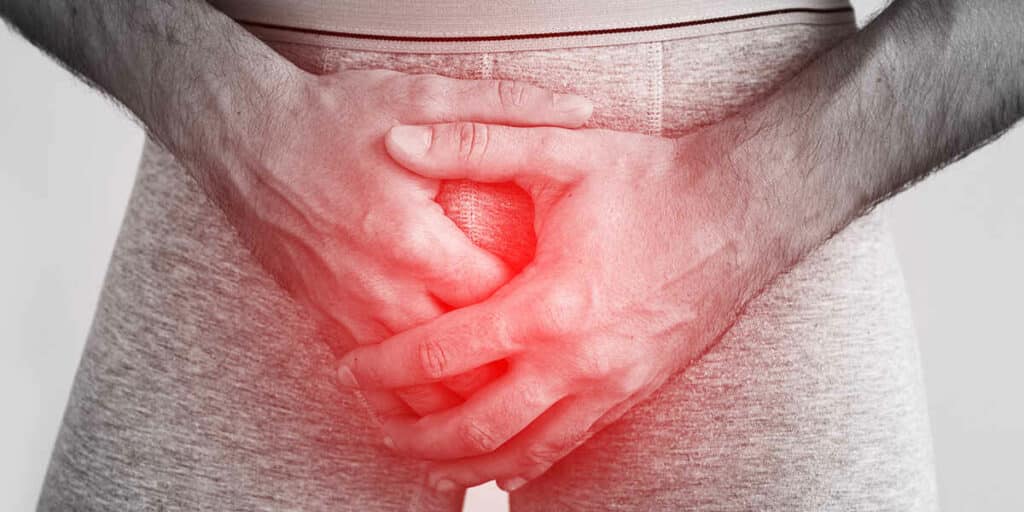A Comprehensive Guide to Safe Dating in the Age of Online Platforms
In today’s digital era, finding love or making connections through online dating platforms and apps

What is orchitis? Orchitis is the diagnosis of swollen testicles (one or both), often from a viral or bacterial infection. You can get bacterial orchitis from a sexually transmitted infection, causing many to wonder whether or not orchitis is an STD.
Orchitis has many causes. For example, you may also get mumps orchitis, a form of viral orchitis from the mumps virus. The cause of orchitis may also be unknown.
Over 600,000 males report symptoms of acute or chronic epididymitis each year, referring to inflammation around the coiled tubes behind the testicles causing severe pain. Approximately 60% of this group also experience epididymo-orchitis, where inflammation affects the testicles.
Because of its prevalence, all boys and men should understand how to identify orchitis and when to seek treatment. Read on to learn everything you need to know about this misunderstood condition from our Rapid STD Testing team.
Understanding the main symptoms of orchitis can help you know what to watch out for. General groin pain, swelling, and discomfort can have many root causes with varying severity, so it helps to learn the key distinctions. Knowing the difference between general groin pain and testicular torsion makes an enormous difference.
Orchitis symptoms typically occur suddenly and severely. You may feel fine one day, then experience extreme pain and swelling the next. These and other symptoms may last several days or longer, depending on the root cause. Epididymo-orchitis can occur with an acute onset and duration or as a chronic condition, causing slow, long-term complications.
The primary symptoms of orchitis include the following:
The scrotum is the skin sack containing the testicles, while the testicles create sperm and control other sexual functions. You may experience pain and swelling across the entire scrotum or deeper within one or both testicles with orchitis. Understanding how to pinpoint pain in specific areas will help you differentiate your symptoms.
Understanding the difference between testicle and groin pain is critical to determine your condition. The groin is the skin area between the thigh and abdomen, while the testicles are specific male organs. Groin pain can have many different causes than testicular pain, though testicular symptoms may relate to an STD.
If you have any symptoms relating to your testicles, you should receive an STD screening to rule out potential infections. You can order a rapid STD test online from Rapid STD Testing for fast and discreet results. We provide a wide range of options, like mycoplasma genitalium testing, comprehensive 10-panel screenings, and more.
You may also visit your local STD testing clinic or doctor for further information. In the following section, we will discuss orchitis diagnosis steps, so you know what to expect.
Now that you know the answer to “What is orchitis?” let’s look at what causes it.
Orchitis has a few different common causes among men and younger boys. Narrowing down the causes of orchitis can help you prevent the condition by practicing different safety protocols. The primary causes of orchitis include the following:
While the inflammation and pain associated with orchitis may not be critical concerns in and of themselves, their underlying cause can have severe complications. For example, untreated syphilis can be fatal.
Determining the root cause of your orchitis can help you find the appropriate treatment to ease the discomfort and prevent it from recurring. You can order same-day STD testing from Rapid STD Testing online as a starting point to rule out different infections.
Certain risk factors increase your chances of sexually and non-sexually transmitted orchitis. If you have any of the following, you may be at a higher risk of orchitis:
Practicing unsafe sex with multiple partners amplifies your risks for orchitis and other sexually transmitted infections. You and your partner should receive regular STD screenings and practice all safe sex recommendations to protect your health. If you notice any symptoms, you should immediately schedule an appointment with your doctor.
What is orchitis, and how can you determine whether you have it?
If you think you may have orchitis, you should visit your doctor for a confirmed diagnosis. Your doctor will likely begin with a physical examination and medical history evaluation to determine potential issues. The physical exam will check for prostate swelling and tenderness.
Next, your doctor may ask you a few basic questions to better understand the issue. For example, they may ask:
The doctor may recommend further testing to understand what’s going on underneath the surface. Common tests include the following:
Doctors consider orchitis a serious concern and will complete all necessary diagnosis protocols to provide you with the correct treatment option.
You should see your doctor immediately after noticing any orchitis symptoms. Regardless of the cause, orchitis can lead to severe complications, including infertility, sepsis, and more. Pain, swelling, and redness all indicate underlying infections that require immediate treatment before they migrate into your bloodstream, developing into a potentially life-threatening concern.
Conditions similar to orchitis, like testicular torsion, also present severe complications. If you notice any testicular symptoms, you should schedule an appointment with your doctor or visit an emergency clinic as soon as possible.
The treatment of orchitis depends on the cause. Bacterial and viral orchitis have different treatment protocols.
Bacterial orchitis from an STI or other infection requires antibiotics. You must complete the full course of antibiotics, even if your symptoms subside quickly. If you do not complete the full course, the bacteria may repopulate, causing your infection to return.
Bacterial orchitis can take a few weeks to heal. During this period, rest the area and inform your sexual partner that they will also need STI testing and treatment.
Viral orchitis has no treatment, though it will dissolve on its own over time. Depending on the severity, the symptoms may take a few days, weeks, or months to resolve completely. You can use our at-home methods below to improve your healing process.
If you have bacterial orchitis, you cannot treat the infection at home, as you need to receive antibiotics. If you have viral orchitis, you may use the following methods to reduce swelling and ease tenderness while your body heals itself:
You may use the above tips combined with your antibiotics to alleviate pain and improve healing if you have a bacterial infection.
The best way for men to avoid dealing with orchitis is by preventing the condition altogether. While certain infections may be unavoidable, you can reduce your risks to prioritize your health. We recommend the following prevention tips:
What is orchitis? Orchitis occurs when one or both testicles swell, causing severe tenderness and other side effects. Orchitis can have severe, life-threatening complications if you neglect to treat it due to the potential underlying conditions at hand. If you experience any scrotal or testicular symptoms, you should immediately call your doctor for a diagnosis.
At Rapid STD Testing, we provide fast and discreet STD screenings to help you understand the cause behind your orchitis to expedite the treatment process. Order a 10-panel STD test today from Rapid STD Testing, or call our team at (866) 872-1888 with any questions.

No embarrassing exams, long waiting lines, or multiple visits. Just a quick lab visit for fast results.
Discover a lifestyle-focused approach to quality content at RapidSTDtesting.com. Unlike others, we don't rely on gimmicks or fabricated data to lure visitors. Our commitment goes beyond clicks – we're dedicated to answering the questions you search for online. With a team comprising medical experts and content specialists, our articles are meticulously crafted to promote STD testing, educate, and dismantle social stigmas.
Embrace a confidential atmosphere with our private testing options, ensuring your privacy is paramount. Every article is meticulously fact-checked and approved by medical advisors, guaranteeing accuracy and reliability. Our team, comprised of doctors and medical professionals, ensures that each piece of content serves a purpose – to inform, educate, and promote awareness.
Join us as we bridge the gap between medical expertise and lifestyle choices. RapidSTDtesting.com is your trusted source for informative, medically vetted content.